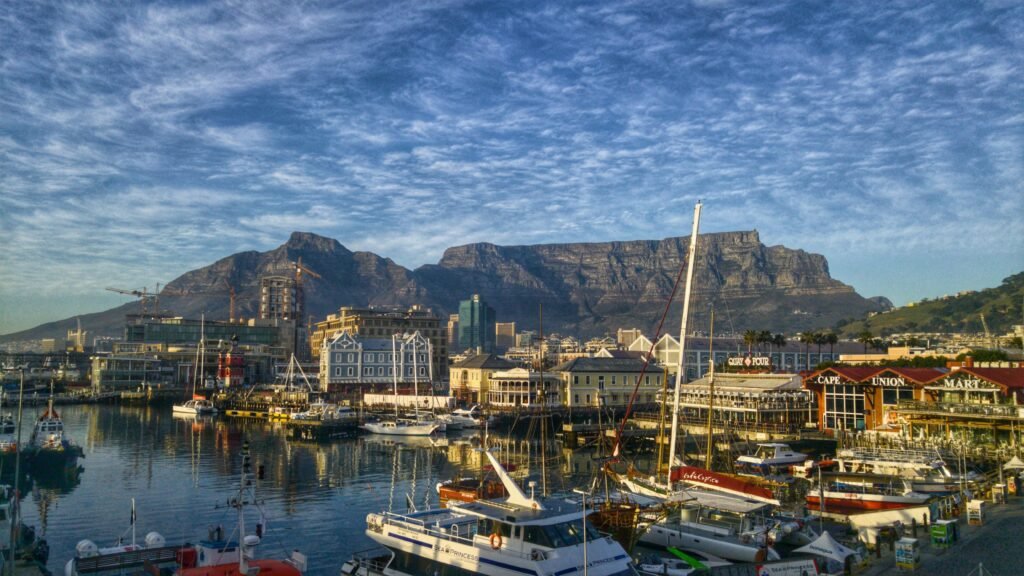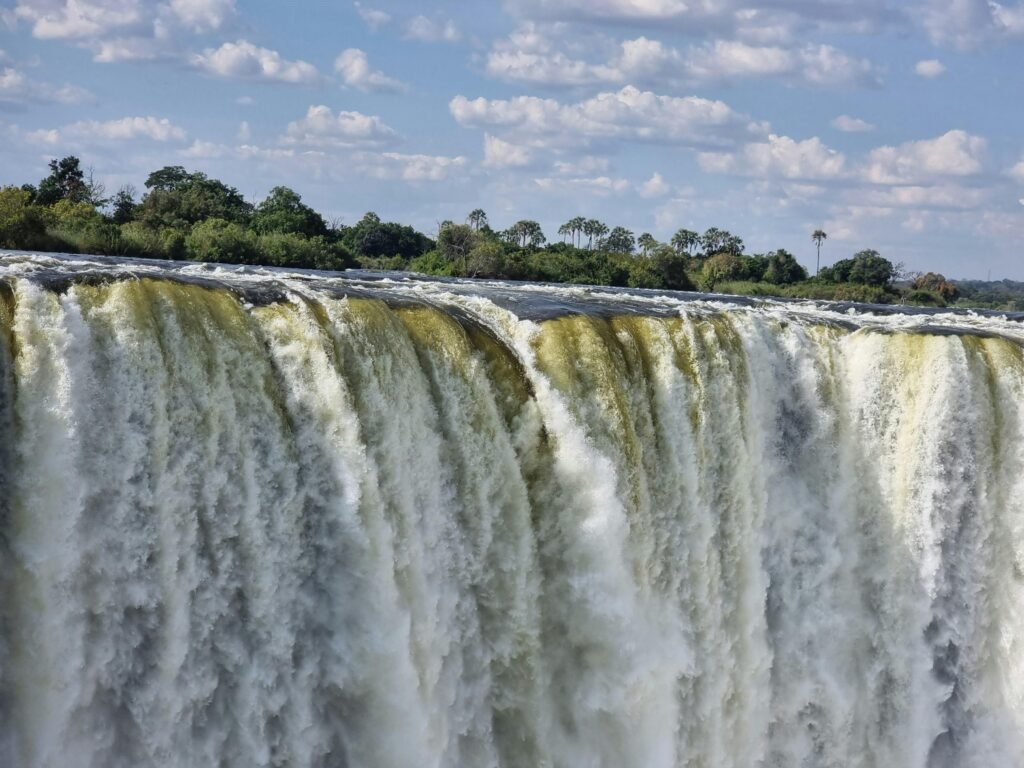
Serengeti: The Serengeti is one of those rare places that lives up to the legend. A vast, sun-warmed plain the size of a small country, it’s where big skies meet big wildlife, lions padding through grass the colour of wheat, elephants tracing ancient routes, and the Great Migration pulsing like a living river across the savannah. If you’ve ever dreamt of safari, this is your north star.
This in-depth guide is written for UK and international visitors, families planning a first safari, couples seeking a once-in-a-lifetime escape, and solo travellers who want a trip that’s equal parts awe and ease. We’ll cover where to go, when to go, how to plan, and how to travel well, plus realistic itineraries and ideas that tie your Serengeti adventure into a broader UK-friendly holiday.
The Serengeti at a Glance
Where is it? Northern Tanzania, bounded by Kenya’s Maasai Mara to the north.
How big? Nearly 15,000 km² – roughly the size of Northern Ireland.
Why it matters: It’s a UNESCO World Heritage landscape and the stage for the Great Migration – one of Earth’s last large-scale mammal movements.
What you’ll see: Big cats, vast plains game, iconic acacia silhouettes, and seasonal scenes that change dramatically through the year.
Who it’s for: Families (yes, with sensible planning), couples (it’s wildly romantic), and solo travellers (guides and group departures make it social and safe).
A Short, Useful History
“Serengeti” comes from the Maa word siringet“, the place where the land runs forever.” For centuries, pastoralist communities, including the Maasai, stewarded these grasslands, moving herds with the rains. Colonial-era hunting and land pressures led to early protections in the 20th century; the Serengeti National Park was gazetted in the 1950s and later expanded to anchor the wider Serengeti–Mara ecosystem.
Today, the park is the beating heart of Tanzania’s famed “Northern Circuit.” Conservation is a constant balancing act: safeguarding migration routes, managing tourism impact, and supporting communities that live around the park. Travellers play a role too in choosing operators who respect wildlife distances, stick to tracks, and invest locally.
How the Serengeti Works: Regions & Seasons
The Serengeti isn’t one homogeneous plain; it’s a patchwork of habitats with different personalities. Think of the park in four broad regions:
Southern Plains (Ndutu & Naabi)
Short-grass open country that bursts with life during the calving season (roughly late January–March) when wildebeest drop their young in astonishing synchrony. Expect drama: predators concentrate here when the nursery is in session.
Central Serengeti (Seronera)
The year-round “classic” Serengeti rolling grass, kopjes (granite outcrops), and dependable predator sightings. Good for first-timers and families thanks to reliable wildlife and strong lodge/airstrip infrastructure.
Western Corridor (Grumeti)
A mosaic of riverine forest and grassland. April–June brings movement west toward the Grumeti River. It’s lush, beautiful, and less busy than the centre.
Northern Serengeti (Kogatende & Lamai)
Hills, woodlands, and the Mara River. July–October is peak time for river crossings as herds oscillate along the Tanzania–Kenya border. It’s a longer hop to reach, but crowd levels stay reasonable relative to the spectacle.
Migration myth-buster: The Great Migration is not a once-a-year parade but a circular, weather-driven movement. You can plan around broad seasonal patterns, yet exact timing pivots on rainfall. The best strategy is to match your travel window to the region that’s typically productive then stay flexible with day-to-day plans.
When to Go (And What You’ll Get)
- January–March (Green & Calving Season): Southern plains shine. Expect baby wildebeest, dramatic predator encounters, afternoon storms, and painterly sunsets. Great for photographers and couples; families with younger children love the short game drives between sightings.
- April–May (Long Rains): Lusher landscapes, fewer vehicles, excellent value. Some tracks become muddy; consider camps with solid all-weather access. Birding is superb.
- June–July: Western Corridor into the north. Cooler mornings, clear light, and the first river-crossing action in late June/July. Popular for active travellers who like longer game drives.
- August–October: Northern Serengeti peak. High chance of Mara River crossings, big cats on patrol, and crisp, dry days. Book early – prime camps sell out.
- November–December (Short Rains): Fresh grazing draws herds south. A “secret season” with dramatic skies, good value, and fewer crowds, especially attractive to solo travellers and photographers.
Essential Facts & Practicalities
Getting There from the UK
Most travellers fly from London or regional UK airports to Kilimanjaro International (JRO) with one stop (via hubs like Doha, Istanbul, Amsterdam, or Nairobi). From JRO (or Arusha), connect by light aircraft to Serengeti airstrips (Seronera, Kogatende, Grumeti, Ndutu). Overland transfers are possible within a Northern Circuit itinerary, but expect long days (beautiful – yet bumpy).
Tip for families: Break journeys with an overnight in Arusha or Karatu to sidestep overtired kids on day one.
Visas & Health
Tanzania offers an eVisa system and also visas on arrival for many nationalities; policies can change, so check official guidance well before you travel. The region is malarial; consult your GP or a travel clinic about prophylaxis and routine vaccinations. Yellow fever certificates may be required depending on your route of entry/transit.
Park Rules & Safety
- Stay on tracks and give animals space – guides keep you safe and sightings ethical.
- No drones in the national park without special permits.
- Night drives are typically not allowed inside the national park; some private reserves bordering the park do offer them.
- Predators ignore vehicles but respect camp staff briefings: no wandering unescorted after dark.
Money & Tipping
Most camps take cards; small notes (USD or TZS) can be helpful for tips and local markets. Tipping norms vary by operator; many suggest pooled, end-of-stay contributions for guides and camp teams.
Connectivity
You’re here to unplug; the signal can be patchy. Many camps have limited Wi-Fi in the mess/lounge; uploads can be slow. Download playlists and offline maps in advance.
Where You’ll Actually Go: Highlights & Hidden Corners
Seronera’s Kopjes and Big Cats
If your mental safari screensaver features lions on rock outcrops, this is it. Cheetah scan the plains; leopard drape over sausage trees by the river. Despite popularity, a smart guide can work quieter loops.
Good for: First-timers, families, short stays.
Ndutu’s Newborns
The energy here during calving is unique, tens of thousands of calves on spindly legs, nursery herds flowing across the grass. Expect swift, intense sightings and shorter game drives.
Good for: Photographers, couples on a romantic winter sun break, families with curious kids.
Grumeti’s River Country
Scenic variety, woodland, thickets, open glades and fewer vehicles. The Grumeti River hosts dramatic crossings in some seasons and plenty of resident game year-round.
Good for: Safari connoisseurs, travellers seeking quieter circuits.
Kogatende’s River Crossings
The Mara River is the stuff of documentaries. Mornings can be calm; by afternoon, the banks thrum with anticipation. Crossings are never guaranteed – patience is the golden rule.
Good for: Bucket-list hunters who value a deeper northern stay (4+ nights ideal).
Off-Grid Walking & Fly-Camps (Select Areas)
In parts of the greater ecosystem outside core national park zones, guided walking safaris and fly-camping offer a grounded, old-school safari feel – pacing the bush at dawn, learning tracks and bird calls, sleeping under canvas with a billion stars.
Good for: Active couples and seasoned safari-goers.
How to Choose Your Safari Style
Mobile Tented Camp vs Permanent Lodge
- Mobile (seasonal) camps move to stay close to migration hot-spots – perfect for maximising action and minimising long drives. Expect ensuite tents, hot bucket showers, and the romance of lantern-lit dinners.
- Permanent lodges bring sturdier infrastructure – plumbed bathrooms, pools, kids’ menus, sometimes spas. They’re great for families and travellers who prefer more amenities.
Private Vehicle vs Shared
- Private vehicles suit families (car seats, snack breaks, flexible pacing) and photographers (window seats, long waits at sightings).
- Shared vehicles are social and cost-effective; many lodges keep group sizes to 4–6.
Balloon Safaris
At first light, drifting above the plains is pure theatre – zebras like brushstrokes and rivers unfurling in dawn light. It’s popular for honeymooners and big anniversaries. Dress warmly; landings can be bumpy but safe.
Responsible Travel: Make Your Trip Count
- Operator choice matters. Favour companies that train and retain local guides, avoid off-roading in sensitive areas, and invest in conservation or community initiatives.
- Water & waste. Bring a reusable bottle; most camps provide safe refill stations. Avoid single-use plastics where possible.
- Cultural respect. If visiting a community or market, ask before photographing people, and buy locally made crafts rather than mass-produced imports.
- Wildlife first. No baiting, no chasing, no calling. A respectful distance yields natural behaviour and better photos.
Practical Planning for Different Travellers
For Families
- Ages & attention spans: Many lodges welcome children; some have age limits for game drives or walking. Consider malaria prophylaxis suitability and build in pool/downtime.
- Room setups: Interconnecting tents or family suites make bedtime easy. Ask for early dinners and flexible game-drive timings.
- Activities: Junior ranger programmes, spoor-tracking walks around camp, and stargazing keep little ones hooked.
For Couples
- Privacy & pace: Choose smaller camps with just a handful of tents, private plunge pools, or bush breakfasts away from the hubbub.
- Moments that matter: Balloon flight at sunrise, sundowners on a kopje, candle-lit dinners under acacias – simple, unforgettable rituals.
For Solo Travellers
- Join a small-group departure for the social vibe and cost savings, or go private for full flexibility.
- Community around the fire: Safari tends to be naturally convivial – shared vehicles by day, stories around the campfire by night.
What to Pack (UK-Friendly List)
- Neutral layers: Breathable shirts, a warm fleece for chilly mornings, and a light waterproof in the rains.
- Sun armour: Wide-brim hat, high-SPF sunscreen, sunglasses.
- Footwear: Lightweight trainers or walking shoes; sandals for camp.
- Binoculars: A compact 8x or 10x pair makes every sighting better.
- Camera: A 100-400mm lens is a sweet spot; a beanbag beats a tripod in vehicles.
- Small kit: Insect repellent, basic meds, power bank (12V outlets common in vehicles), universal adapter.
- Soft duffel: Internal flights have strict weight/size limits; soft bags load better in bush planes.
Photography Etiquette & Tips
- Know your light: Golden hours are brief at the equator; set alarms and be ready.
- Tell the story: Don’t chase only the big close-ups – wide shots of storms, dust, and silhouettes carry the soul of the Serengeti.
- Be patient: Give yourself two nights per region minimum to ride out the weather and animal movements.
- Mind the moment: Engines off when asked; no flash at close range; keep volume low at sensitive sightings (river crossings, hunts, dens).
Food & Drink: What Dining Looks Like on Safari
You won’t find high-street restaurants inside the park; the culinary action is at your camp or lodge. Expect fresh, hearty menus with a global tilt – think grilled fish, spiced stews, salads, homemade bread, and surprisingly good desserts. Picnic breakfasts or lunches are common to extend game-drive hours. Special diets (vegetarian, vegan, gluten-free) are widely accommodated with advance notice.
Pre/post-safari: Arusha and Karatu offer a growing mix of cafés, bakeries, and farm-to-table spots—handy for a gentle ramp-up day with kids or a celebratory dinner after a week in the bush.
Two Realistic Serengeti Itineraries (With Times & Distances)
1) The Classic Northern Circuit (7 Days, Fly-In/Drive Combo)
Who it suits: First-timers, families, or couples who want variety without rush.
Day 1 – Arusha (Arrival): Land, overnight to beat jet lag. Stroll shaded gardens, brief with your guide, check kit.
Day 2 – Tarangire National Park (2.5–3 hrs by road): Elephant herds, baobab forests, and big skies. Overnight inside or near the park.
Day 3 – Ngorongoro Crater (2–3 hrs drive): Dawn descent for a full morning on the crater floor – rhino chances and classic “Lion King” vistas. Afternoon transfer to the Serengeti (3–4 hrs to the central region) with a game drive en route. Overnight Seronera.
Day 4 – Central Serengeti: Full day exploring kopjes and river loops. Picnic lunch out on the plains. Sunset on a granite dome; star-gazing after dinner.
Day 5 – Fly to Northern Serengeti (45–60 minutes): Light aircraft hop to Kogatende/Lamai for two nights. Afternoon drive along the Mara; watch for early or late-day crossings in season.
Day 6 – Northern Serengeti: All-day search in a private vehicle if possible – riverbanks in the morning; woodland valleys in the afternoon.
Day 7 – Fly back to Arusha (1.5–2 hours total with stops): Connect to onward flight or add a beach finale.
Why it works: You sample three ecosystems with sensible drive times. Families can tweak with a second night at the crater rim to slow the pace.
2) Calving Season Focus (5 Days, Fly-In)
Who it suits: Photographers, couples, and travellers aiming squarely at the baby boom.
Day 1 – Arusha to Ndutu (60–90 min flight): Arrive late morning; afternoon game drive on the short-grass plains.
Day 2 – Ndutu: Sunrise and late-afternoon drives, with a relaxed brunch and siesta in between. Expect dramatic predator scenes; keep a respectful distance.
Day 3 – Ndutu to Central Serengeti (3–4 hrs by road, game-drive style): Transition via Naabi Gate, exploring kopje country en route.
Day 4 – Central Serengeti: Mix river loops and open plains; balloon safari at dawn if you’re keen.
Day 5 – Fly to Arusha: Leisurely breakfast, short transfer to the airstrip, and a scenic flight back.
Why it works: You’re placing yourself where the action is, then adding classic Serengeti textures for variety – all without over-scheduling.
Where to Stay: A Balanced Mix
Budget-conscious: Simple tented camps and select public campsites deliver the core experience – sunrise coffee, lion roars at night, hot bucket showers without the frills. Great for small-group trips or adventurous solos.
Mid-range favourites: Intimate tented camps with ensuite tents, good guiding, and convivial mess tents. Expect solid beds, warm hospitality, and well-chosen locations tied to seasonal wildlife.
Boutique & luxury: Architect-led lodges or high-spec mobile camps with standout guiding, show-stopping views, and thoughtful touches (plunge pools, wine cellars, private dining). Ideal for honeymoons and milestone trips.
Family-friendly picks: Look for camps offering family suites, shorter drive options, child-friendly menus, and activity packs. Fenced properties or those on open plains (better visibility) can reassure parents of younger children.
Booking note: Migration-hotspot camps (northern river or southern calving zones) fill early for peak months. If your dates are fixed, book 9–12 months ahead for the best shot at first-choice camps.
Seasonal Events & Special Experiences
- Calving Season (Jan–Mar): New life on the southern plains, dazzling for behaviour photography.
- River Crossings (Jul–Oct): The northern drama – adrenaline, dust, and crocodile-haunted channels.
- Ballooning (Most months): Sunrise flights over central or northern sectors, with champagne breakfasts to land.
- Birding Bonanza (Nov–May): Palearctic migrants join resident specials; wetlands flush with life after the rains.
- Cultural Encounters (Year-round, outside the park): Visits to local markets or community projects around Karatu and Mto wa Mbu; go with operators who prioritise respectful, non-staged experiences.
Broader UK-Trip Tie-Ins
The Serengeti naturally anchors a bigger holiday:
- The “Bush to Beach” pairing: Fly to Zanzibar (or Pemba/Mafia) for warm seas, spice-scented stone towns, and boutique beach hideaways – an easy add-on beloved by UK couples and families.
- East Africa twin: Combine the Serengeti with Kenya’s Maasai Mara for a full sweep of the ecosystem – especially rich during the migration arc.
- Back home inspiration: If the safari bug bites, the UK is rich with wild weekends – Cairngorms for red deer and ancient pines, Lundy for seals and seabirds, or a winter pilgrimage to Snettisham for knot murmurations. They’re not the Serengeti, of course, but they’ll keep your nature muscle warm between safaris.
FAQs – Serengeti
How long should I stay?
Four nights minimum inside the Serengeti (split across two regions if you can). A full Northern Circuit typically runs 7–10 days.
Is it child-friendly?
Yes, with sensible pacing, child-friendly camps, and guides used to working with families. Many lodges accept children from age six; some welcome younger – check policies.
What about accessibility?
Ask about step-free tents, vehicle adaptations (fold-out steps, grab handles), and shorter game-drive loops. Private vehicles make a big difference.
Will I have to rough it?
Only if you want to. The Serengeti spans everything from old-school camps to design-forward lodges worthy of a honeymoon feature shoot.
What if the migration “isn’t there”?
There’s superb resident game year-round. Plan around seasons but avoid chasing the herd day-to-day; a seasoned guide will balance patience and variety.
Final Thoughts
A Serengeti safari isn’t just a tick on a list; it’s a recalibration. The scale, the silence, the sheer, breathing presence of wild herds – these linger long after you’ve flown home. Go with curiosity, travel lightly, and give the place time to work its quiet magic. Whether you’re corralling kids, celebrating a milestone, or taking yourself on that long-promised solo odyssey, the Serengeti will meet you more than halfway.


